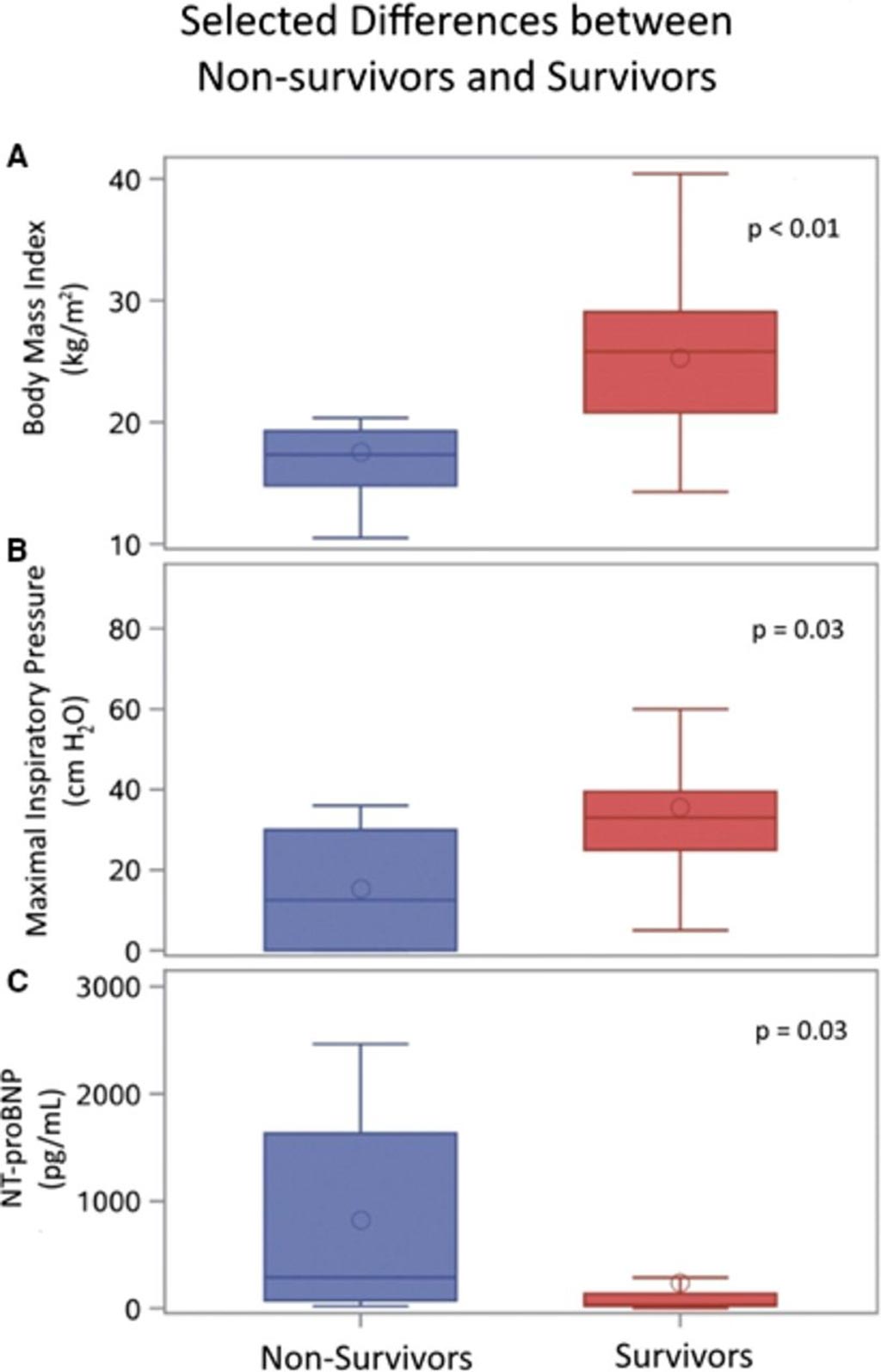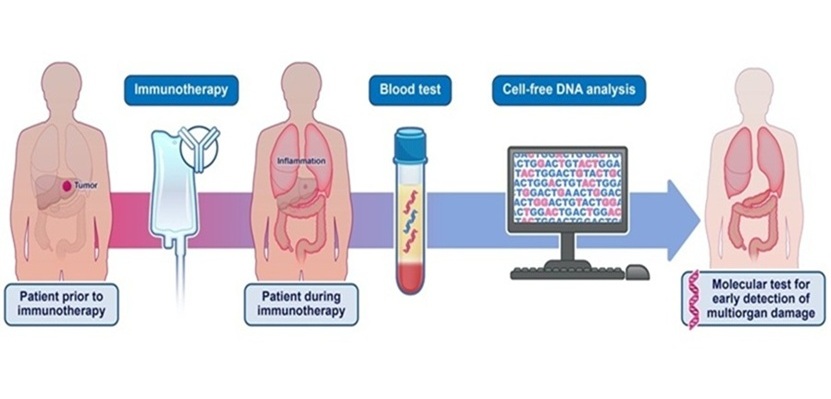Risk Factors Identified for Duchenne Muscular Dystrophy-Associated Cardiomyopathy
By LabMedica International staff writers
Posted on 31 Oct 2017
Researchers have now identified important factors associated with death, thus highlighting a high‐risk DMD population with a worse cardiovascular and overall prognosis.Posted on 31 Oct 2017
The study, by a team led by Dr. Pradeep Mammen, associate professor at UT Southwestern Medical Center (Dallas, TX, USA), identified predictors of poor outcomes in DMD patients and suggested that more patients could live longer by identifying and more aggressively treating those with certain risk factors.

Image: Box‐and‐whisker plot comparisons between nonsurvivors (n=8) and survivors (n=35) by: (A) body mass index, (B) maximal inspiratory pressure, and (C) N‐terminal pro‐brain natriuretic peptide (NT‐proBNP) (Photo courtesy of Cheeran D et al, 2017, Journal of the American Heart Association).
The researchers followed 43 patients for about 2 years and found 3 traits common among those who died earlier: Underweight (average 17.3 BMI (body mass index), versus 25.8 average BMI in those who survived the study); Poorer lung function respiratory profiles (measured in terms of the highest pressure during inhalation); and elevated levels of cardiac biomarker proteins (e.g. N‐terminal pro‐brain natriuretic peptide) in the blood that indicate the heart is damaged or weakened. There was also some evidence of lower levels of an enzyme found in patients with liver damage among those who died.
Due to improved care in the last 20-30 years, today most patients with Duchenne muscular dystrophy (DMD) live into young adulthood, with the majority developing a cardiomyopathy. They are on angiotensin‐converting enzyme (ACE) inhibitors or steroids, but few other guideline‐directed heart failure medication are being used. Adding other heart medications, such as beta-blockers and mineralocorticoid antagonists, to the more commonly used ACE inhibitors could help prevent decline in heart function and postpone death, the researchers concluded. Implanting defibrillators to treat irregular heartbeat also was suggested. Finally, the study endorsed cardiac MRI over the commonly used echocardiography as a more sensitive test to evaluate the severity of heart problems in DMD patients.
“I think the general thought process is: ‘These patients are not going to live long,’” said Dr. Mammen, “Well, that’s false.” Fifteen years ago almost none of these patients lived into their 20s. Now, it is not so uncommon to see patients survive into their 30s and 40s, he said. Genome-editing based research, led by Dr. Eric Olson, is also underway at UT Southwestern that may lead to therapy that would eliminate the genetic mutation that causes the disease, he added.
The study, by Cheeran D et al, was published October 17, 2017, in the Journal of the American Heart Association.
Related Links:
UT Southwestern Medical Center














